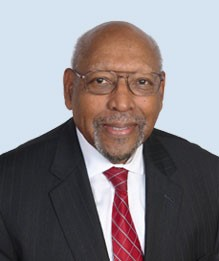 Lessons from the Field: Three Tips for Success as an Interim President
Lessons from the Field: Three Tips for Success as an Interim President
Dr. Richard Green
Senior Consultant
The Registry
My long career in higher education administration was preceded by an interesting public school education experience beginning in Louisville, Kentucky, where I graduated from high school following 12 years of segregated school. Shortly after my 16th birthday, I enrolled at Concordia College in Moorhead, Minnesota. During the four years I studied at the college I remained the first and only Black student. Following the completion of my undergraduate degree, I moved on to North Dakota State University in Fargo, North Dakota as the first Black student to graduate with a Master’s Degree in Chemistry. I eventually journeyed back South to become the University of Louisville’s first Black graduate with a PhD in Chemistry.
After teaching two years at Kentucky State University, an HBCU, I accepted a position as assistant professor of Chemistry teaching three years at Concordia College, where I served as the first Black professor at the College.
Initial Administrative Experience
After teaching chemistry at Concordia, I accepted a position as Assistant to the President at State University of New York College at Buffalo. There I received mentoring and leadership experience, which served as a forerunner to my eventual success as an Interim President. Key contacts were Don Schwartz, VPAA at SUNY Buffalo, E.K. Fretwell, President at SUNY Buffalo, and Ernest Boyer, SUNY System President. Schwartz was later appointed President of Purdue University Fort Wayne and subsequently President of the University of Colorado Fort Collins. Boyer was a renowned higher education guru of national stature.
Upon leaving SUNY Buffalo, my next appointment was at the University Massachusetts at Amherst, where I served as Director of the Southwest Residential College and enjoyed the opportunity to work with Chancellor Randolph Bromery. After my tenure at UMASS Amherst, I had the special opportunity to work with Tom Langevin, then President of Capital University, as the university’s Dean of the College of Arts and Sciences. Tom of course would later go on to co-found The Registry for College and University Presidents.
3 Tips for Success
The first tip for new interim presidents is to take full advantage of the lessons you learned in comparable situations during your pre-interim appointments. While an interim position will undoubtedly introduce you to a new environment, to new actors and stakeholders, and to new challenges it is unlikely that you will encounter any new surprises. This first tip may seem straightforward, but there are numerous examples of the consequences of a new interim president failing to yield to her or his better instincts.
This observation leads me to my second tip: I have learned that the interim president must assume a mindset that there is no time to be new. As best I could, I expressed to the campus in the most reassuring terms that I had accepted the responsibilities of the interim presidency as if I had been named the permanent. Thus, I would be as transformational and forward looking as possible. Under my interim leadership, the institution would continue to move from vision to action, to fulfill its mission, and to enhance its strategic plan. Moreover, fundraising would continue to be a priority and that student-centered policies and actions would be reinforced.
Thirdly, any degree of success one expects to have as an interim president must be grounded in a sound understanding of the institution and community members one is charged to lead. Is the interim president well-grounded in the history of the college or university? if not, she or he must make a special effort to get up to speed as soon as possible, preferably prior to the appointment. As an interim, there is little room for error given the tight time constraints. Therefore, it is imperative that a prospective interim president conduct the appropriate due diligence of the institution and its challenges at hand to ensure that there is a good fit.
The global pandemic and other significant national events of the past few months require the interim to forget ones “newness.” Similar, albeit less severe events, will most likely occur and the leadership posture of the interim president must ring loudly in response. As Vance Packard once said, “Leadership appears to be the art of getting others to want to do something that you are convinced should be done.” As interim president, your leadership style is of paramount importance. It is imperative that you determine which leadership posture is best suited for the institution and its challenges at hand. The human resource empowerment approach of Kant has suited me in all my interim presidencies. From Metropolitan State University in Minnesota, Midland University in Nebraska, to Lincoln University and United Lutheran Seminary in Pennsylvania, I have found the caring and inclusive style to be the most successful.
HIRE AN INTERIM
Searching for an Interim?
Please contact us for more information.

